Black Walnut Identification
(for more detailed information on identification of walnuts and related trees, please visit the following link:Identifying Hickory and Walnut Trees
Native to Tennessee Using BRFs
(Brief Recognizable Features)
Black walnut isnative to much of the eastern U.S., where it is found in many rural and urban areas. It is an important economic forest (valued for wood – lumber and veneers) and food resource (valued for nutmeat). Standing black walnut is valued at $569 billion.
Black walnut can be identified by careful examination of leaves, twigs and buds, bark, and/or nuts. If you encounter difficulty in identifying your tree, please contact your county agent or area state forester for assistance. You can always send us a digital image and we'll try to assist you. Identification characteristics of black walnut include:
| Leaves: count the leaflets; black walnut has 13-20 leaflets, with toothed edges on the leaflets |  |
| Twigs and Buds: examine closely – bud scars will resemble a smiling monkey face; use a knife to split the twig – black walnut twigs have a dark, chambered pith | 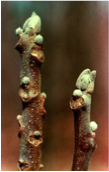 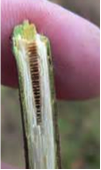 |
| Bark: examine the bark – it will have a rough surface; gently scrape the bark with a knife – the remaining surface will be brown | 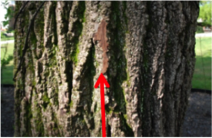 |
| Nuts and Nutmeat: round nuts, generally in clusters of 3 or more, are located at the end of the branches; immature nuts are surrounded by green husks; upon maturing, nuts fall to the ground; removal of the husks will yield a mature nut, which is round, brownish black, and heavily ridged; these mature nuts contain the nutmeat, which is a valuable food source for humans and animals | 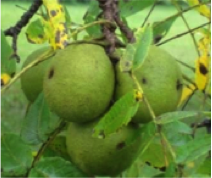
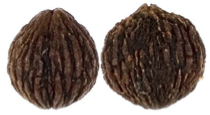  |
